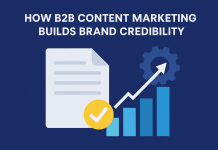Data has shown to be an invaluable ally for B2B organizations. As time passes, data-driven firms continue to demonstrate that today’s customers prefer a personalized experience over a generic sales pipeline follow-up. Who wouldn’t want that?
Businesses are able to target their most-wanted prospects with a better success rate thanks to data-driven decision-making. According to HubSpot, surveyed marketers who segregate consumer data for their ads saw a revenue boost of up to 760 percent.
Mailchimp has confirmed that segmented email marketing campaigns have a 23% higher open rate and a 49% higher click-through rate than campaigns that are not segmented. However, segmenting data is about far more than just email marketing effectiveness.
The following guide will help you cover all the basics of the data segmentation concept and how to apply it to your business.
What Is Data Segmentation?
A practical definition of data segmentation would be the dissection of account-related data using various criteria and its arrangement into specific categories to make it more usable for marketing and sales initiatives.
Data that isn’t segregated has the potential to cause mayhem for new business development teams. Massive amounts of incoming raw data (also known as data exhaust) must be avoided by B2B organizations since they may lead to poor decision-making, budget waste, time burn, and effort consumption by marketing and sales personnel.
Data segmentation, on the other hand, makes it easier to collect, qualify, and integrate client data that can be used to create accurate ideal customer profiles (ICP), which are the engines that drive B2B account-based marketing.
Targeting and segmenting customer data have a similar origin, yet they serve completely different functions. Targeting is a technique for determining the most effective ways to promote your business, brand, and product to your ideal customers. Segmenting comes first, and it’s even called the “technology” underpinning effective targeting.
Benefits of customer data segmentation
Some actions your team members will be able to deploy once they integrate data segments into their daily lead generation game plan are:
- Create customized message templates for specific audiences.
- Work with deeper insights for customized follow-ups.
- Craft target account lists (TAL) with different tiers.
- Plan future steps by identifying new opportunities.
- Reduce the cost of mass-personalized campaigns.
- Improve customer satisfaction due to personalized management.
- Raise your return on investment (ROI) by targeting the right contact at the right time.










